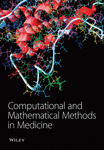The Potential Distribution due to a Dipole Source in the Fetal Heart: A Numerical Model of the Maternal Abdomen
Abstract
The potential distribution in a three dimensional model of the abdomen during pregnancy was studied numerically. Magnetic Resonance Imaging scans were used to construct a three dimensional model with eight different compartments of the abdomen: fetal body, vernix caseosa layer, placenta, uterus fluid, soft tissue, spinal cord, fat and muscles. Each compartment was assigned with its own conductivity and the integral form of the conservation volume conductor equation was solved by a finite volume method. The surface potential distribution of the maternal abdomen was studied for different compartment conductivity and for varying dipole source locations and orientations in the fetal heart. The present study supports the hypothesis that the reduction in the amplitude of the abdominal fetal electrocardiogram around the 30th week of gestation is related to the appearance of a low conductive isolating layer around the fetus. The study shows that an opening in the vernix caseosa layer increases the amplitude of the abdominal fetal ECG with the creation of a preferred signal pathway. It is also shown that the surface potential distribution depends on the fetal posture. Thus, choosing the correct bipolar recording and the appropriate sites of the recording electrodes may result in an increase in the peak to peak amplitude of the fetal ECG.




